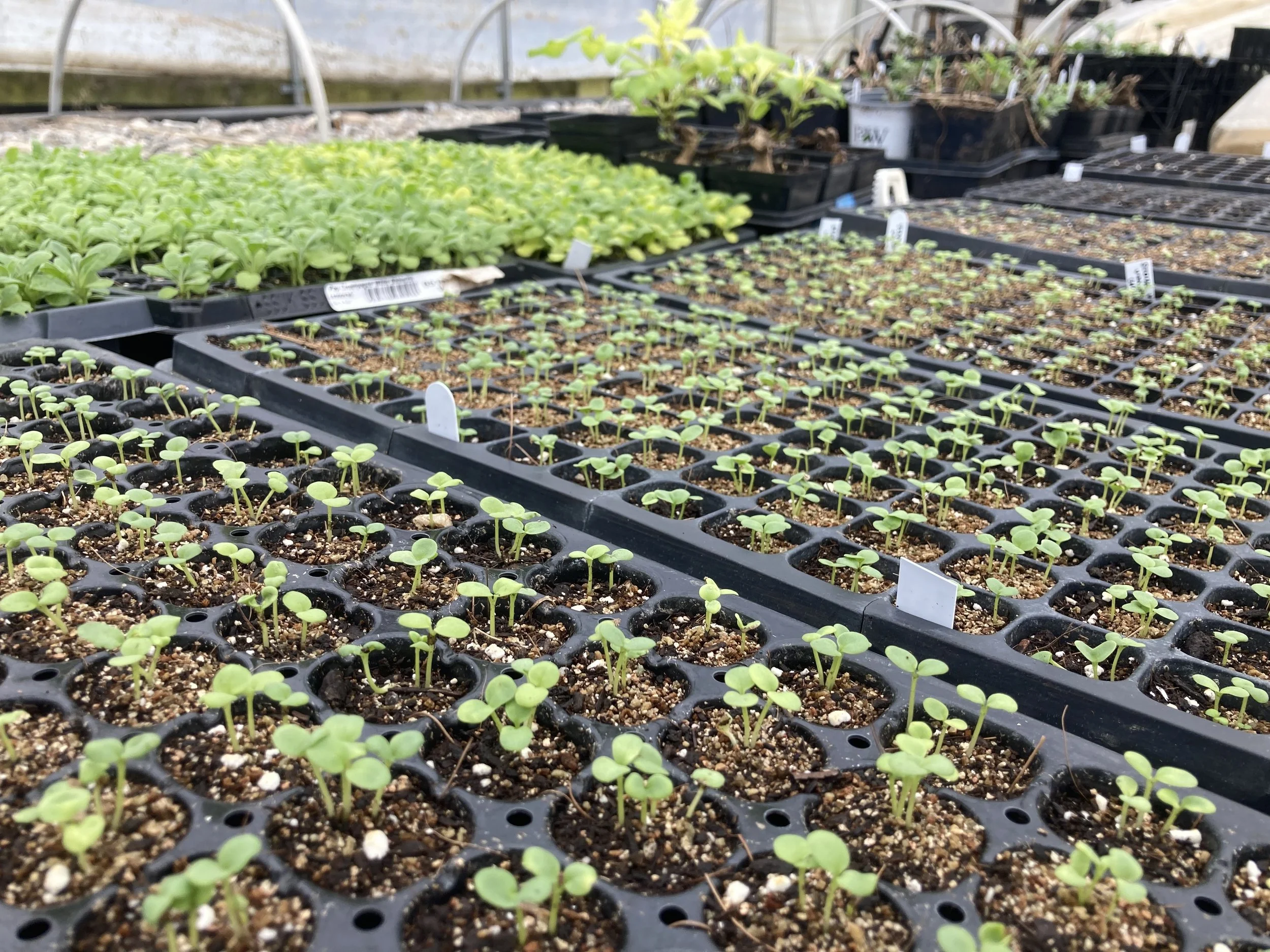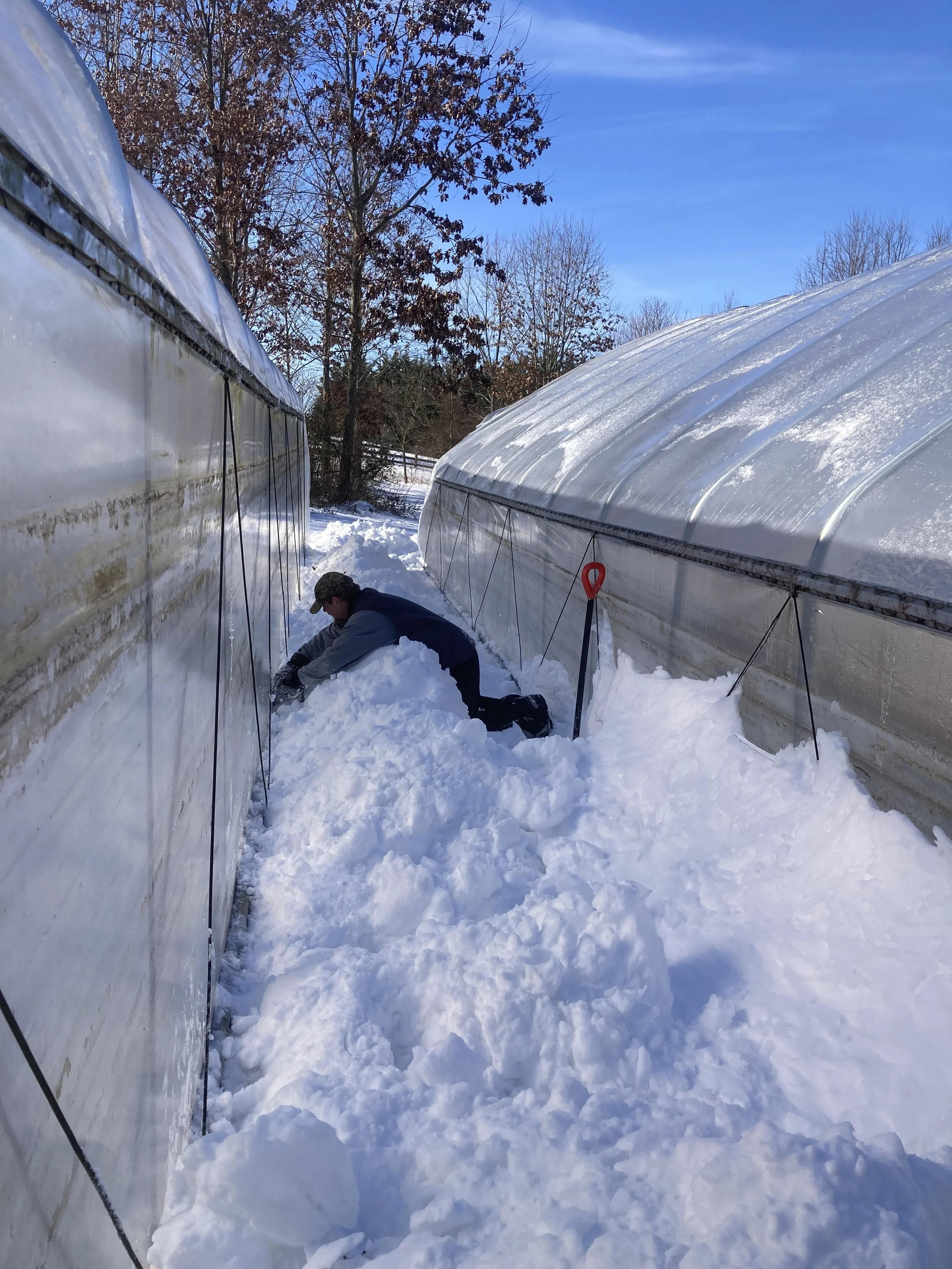Perennial Scheming
Greetings, farm friends!
The snow has melted and we’re gearing up for a stretch of dreary winter days. As we dream of summer and sunshine, we’re spending a great deal of time thinking about how we can make the farm more resilient and simultaneously more beautiful. We’re in the process of applying for a state-sponsored soil conservation grant, which could give us funds to plant hedgerows, put in infrastructure to reduce runoff and redirect the flow of water after heavy rains, and more. As we think about these things, we’re also considering what we can do to create more wildlife habitat on the farm, how we can be creative with our endeavors, and thinking about how we can expand our horizons in our understandings of soil health and ecosystem health.
The desire to make the farm a good habitat for birds and beneficial insects has been a constant on the farm through the years. On top of being general lovers of nature, we know that inviting these species in will help us immensely in controlling the bugs we’d prefer not to have eating our flowers. As it is, we try to really minimize spraying neem and other organically approved sprays, but on occasion, we still find the need to do so. In order to minimize spraying, we do our best to maintain a healthy habitat for birds, we introduce beneficial insects throughout the season as needed to combat infestations of aphids and other crop-damaging insects, and we leave plenty of seedheads in place for birds to eat from through the winter.
We’re thinking more and more about how we can plant native perennials in tandem with our other crops, and trying to find out what native perennials might be suitable for cut flower production. With such a small farm, there’s always a focus on growing productive crops that will turn a profit, but we also want to try to consider what we can grow to support native habitat, and recognize that even if some of these plants aren’t great for sales, they may be saving us labor and money by welcoming birds and insects who control our damaging insect population. We’re only just beginning this journey of considering more hedgerows and more expansive native plantings, but it’s something I’m excited about the possibilities of. I’m sure it’ll be a multi-year process, but restoring habitat and being good stewards of our local ecosystem is critical to creating a farm that can sustain itself long-term.
There are so many creatures out there that we don’t see while we’re working on the farm, or we’re lucky to see once or twice a year. In the past several years, crew members have seen an Eastern red bat hanging from a pawpaw tree, a mink dashing through our ilex patch, salamanders hiding underneath mulch, a snapping turtle laying eggs, and so much more! On a daily basis, we see so many species of bees and butterflies, and birds galore. One of my favorite farm memories was waking up at 3:30 am one Sunday morning to prepare for working the farmer’s market. I looked out the window and saw a massive display of fireflies flashing in the treeline. It was an extraordinary display of light, and to know that thousands of small creatures were spending their night at the edge of the farm was such a delight.
Here’s to more perennials and sustaining healthy ecosystems in 2024!
A lovely stand of rudbeckia triloba that stands tall in front of the neighbor’s horse farm.
Our 2024 Plant Sale is live!
As always, we have multiple pickup locations in Baltimore, DC, and Carroll County. This year we have an order minimum of $24. For folks who pick up on the farm, we’re offering a 10% discount for on-farm pickup, use the code 2BOOTSPICKUP at checkout.
Find additional details about the Plant Sale on our website.
The seedlings we grow for our annual plant sale are all varieties we’ve grown ourselves and know to perform well in this region. Everything is grown in our greenhouse using organic methods. We take great pride and joy in sending healthy plants into the world, and do our best to maintain quality and grow vigorous seedlings.
If you’d rather choose your plants in person, worry not! We’ll be back at the JFX Market and Flower Mart this year, just in time for you to plant your gardens.
If, after reading today’s newsletter, you were hoping to find more native perennials in our online plant sale, please know that we hope to have more available at Flower Mart and our other in-person markets. We’re starting several from seed for the first time this year, and since we don’t have much experience growing all of them out in the greenhouse, we didn’t want to list them online in case we struggle to grow quality plants or mistime anything.
Thanks for reading, and take care!
Amelia & the rest of the Two Boots Crew
Dave, digging the high tunnel sides out from underneath a mountain of snow.



